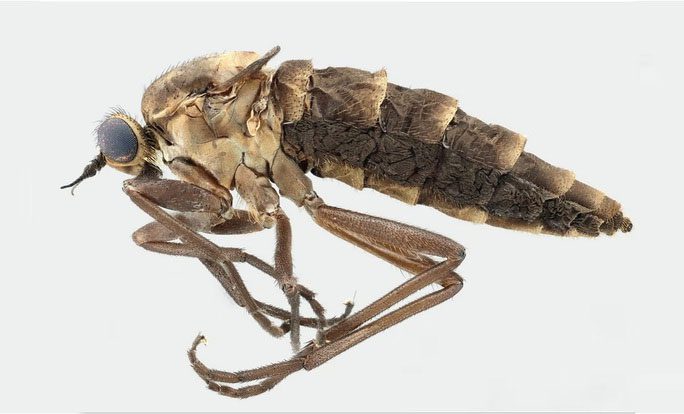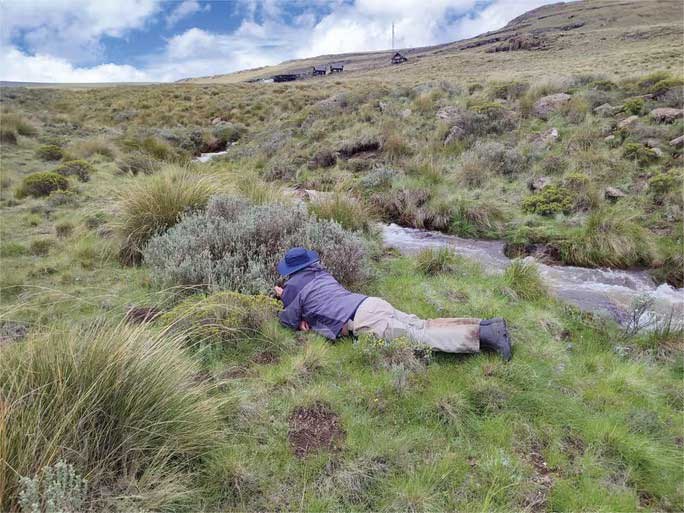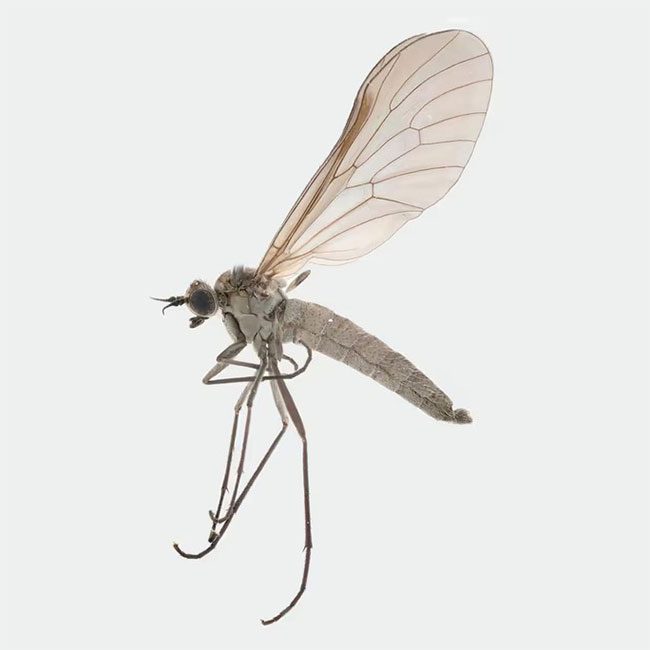South African scientists discover a female specimen with underdeveloped wings in Lesotho, believing it to be a flightless fly.
According to The Guardian on September 14, entomologists John Midgley and Burgert Muller from South Africa embarked on a research expedition to Lesotho, the only country in the world entirely situated at an elevation above 1,000 meters.
Their journey began in December 2021, with the Afriski Mountain Resort in western Lesotho as their base. On the second day at this resort, located over 3,000 meters high, Mr. Muller captured an insect they initially believed to be a wingless moth—similar to those they had encountered in other high-altitude regions.
However, upon closer examination later that evening, Mr. Muller realized that the specimen was actually a fly.

Female specimen of Atherimorpha latipennis with degenerated wings. (Photo: The Guardian).
Using available equipment, the two scientists identified that the fly belonged to the genus Atherimorpha. Interestingly, on the same day, they also collected 51 male specimens of Atherimorpha latipennis (a species within the Atherimorpha genus).
The species Atherimorpha latipennis was discovered in 1956, but the female of this species had never been described before. The similarities with the 51 male specimens indicated that the female specimen belonged to the same species, Atherimorpha latipennis.
To confirm their findings, the scientists had to wait until Mr. Midgley returned to his workplace at the KwaZulu-Natal Museum in Pietermaritzburg, South Africa, to consult further resources.

John Midgley collecting data at Afriski Mountain. (Photo: The Guardian).
Despite the unusual morphology of the female specimen, its mouthparts and antennae were nearly identical to those of the collected males, allowing the scientists to classify the specimen as Atherimorpha latipennis. They decided against conducting DNA tests for fear of damaging the only specimen they had.
As there is no information available regarding the life cycle of Atherimorpha latipennis, the scientists could only speculate about the reasons for the female’s loss of flight capability.
Although flying offers numerous benefits—such as faster movement and easier escape from predators—it also requires significant time and effort to develop wings and consumes more energy when in flight.

Male specimen of Atherimorpha latipennis with functional wings. (Photo: The Guardian).
Mr. Midgley believes that the discovery of the flightless fly in Lesotho provides a broader understanding of the animal kingdom. “Understanding the morphology of species with limited ranges will help us predict their responses to environmental changes,” he stated.


















































